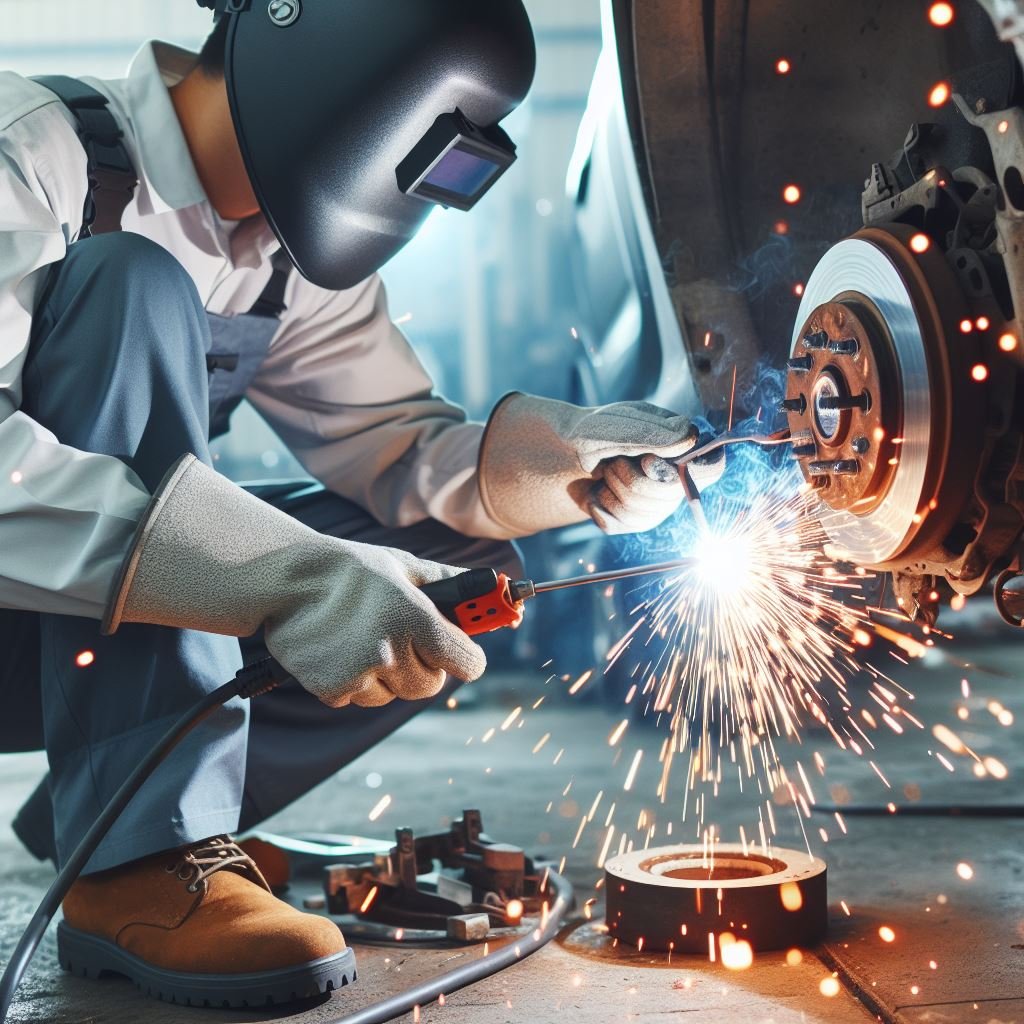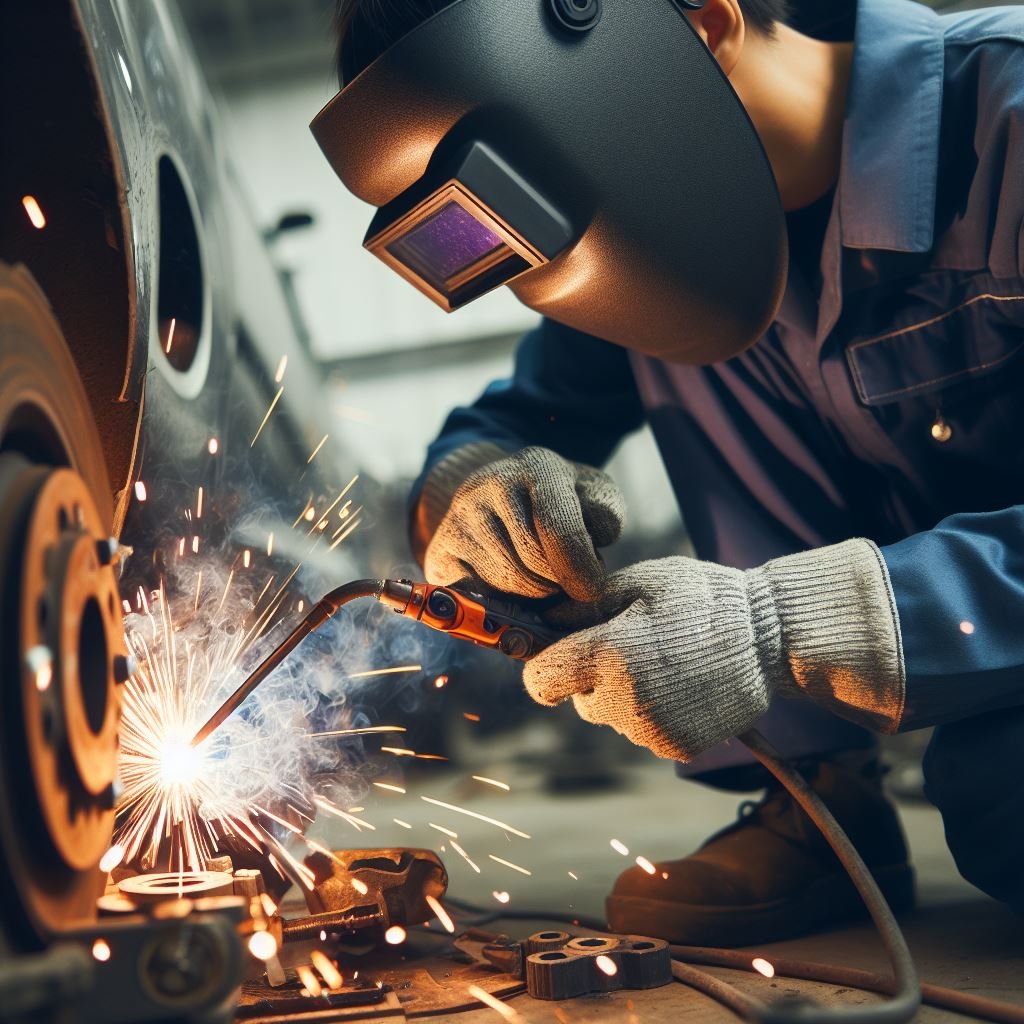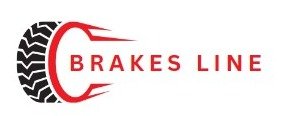John had always been fascinated by cars. He loved the sound of a revving engine and the feeling of the wind in his hair as he drove down the highway. Growing up, he spent countless hours tinkering with engines and learning about different car parts.
But there was one thing that always puzzled him – brake lines. What were they and how were they made? It wasn’t until he stumbled upon the art of brake line welding that he finally found the answers he was looking for. In this blog, we will dive into the world of brake line welding and uncover the techniques, tools, and importance of this vital process in the automotive world.
So buckle up and get ready to learn all about brake line welding.
What is Brake Line Welding?

Brake line welding is a crucial aspect of automotive maintenance and repair. It involves the process of joining two metal brake lines together to ensure the safe and efficient operation of a vehicle’s braking system.
This type of welding is essential in ensuring that the brake lines are strong and durable enough to withstand the high pressures and temperatures generated during braking. The process of brake line welding requires precision and expertise to ensure that the weld is strong and leak-free. This is because any weak spots or leaks in the brake lines can compromise the overall performance of the braking system and put the driver and passengers at risk.
To begin with, the two brake lines that need to be joined are cleaned and prepared for welding. This includes removing any rust, debris or coating from the surface to ensure a clean welding surface. The two ends of the brake lines are then aligned and securely clamped in place to prevent any movement during the welding process.
Next, a skilled welder uses a specialized welding technique, such as TIG or MIG welding, to join the two brake lines together. This involves melting the metal at the point of contact and fusing the two pieces together. The welder must have a steady hand and precise control to ensure a strong and secure weld.
Once the welding is complete, the joint is inspected thoroughly to ensure there are no weak spots or leaks. Any imperfections are immediately addressed to ensure the safety and reliability of the brake lines. It is crucial to conduct a thorough inspection before installing the brake lines back into the vehicle’s braking system.
Brake line welding is a critical process that requires skill, precision, and attention to detail. It is essential to maintain the integrity of the braking system and ensure the safety of everyone on the road. By understanding the importance of brake line welding and relying on skilled professionals, we can keep our vehicles running smoothly and safely.
Why is Brake Line Welding Important?
Brake line welding is a crucial process in the automotive industry. It involves joining metal tubes and pipes to create a continuous and sturdy brake line system. This system is responsible for transmitting hydraulic pressure from the brake pedal to the brake calipers, which then apply pressure on the brake pads to slow down or stop a vehicle.
The welding process involves using high heat to melt and fuse the metal tubes together, creating a strong bond that can withstand the high pressure and forces of a braking system. This ensures the safe and reliable operation of a vehicle’s brakes. The term “brake line welding” can also refer to the repair of damaged brake lines.
Over time, brake lines can experience wear and tear, leading to leaks or breaks. In such cases, welding is used to fix the damaged section of the line, ensuring the brake system remains fully functional. The welding process itself requires a skilled and experienced welder, as precision and accuracy are crucial.
The welder must ensure that the brake line is properly aligned and that the weld is strong enough to withstand the pressure and forces of the brake system. In some cases, specialized equipment such as a pipe bender may be used to shape the brake line before welding. This ensures a perfect fit and reduces the risk of leaks or breaks in the future.
In summary, brake line welding is an essential process in the automotive industry that ensures the safe and reliable operation of a vehicle’s braking system. It requires skill and precision to create a strong and durable bond that can withstand the high pressures and forces involved. Trusting a professional and experienced welder is crucial for the proper repair and installation of brake lines.
You May Also Like: Fix Broken Brake Lines with Our Easy-to-Use Repair Kit
Types of Brake Line Welding

Brake line welding is a crucial process in automotive repair and manufacturing. It involves welding together the different sections of brake lines to create a seamless and strong connection. This is an essential step in ensuring the safe and reliable functioning of a vehicle’s braking system.
But what exactly is brake line welding? In simple terms, it is the process of joining two metal pieces together using heat and pressure. During this process, a filler material is melted and fused with the metal pieces to create a bond that is as strong as the original metal. This not only creates a secure connection but also maintains the integrity of the brake lines.
Brake line welding is a specialized skill that requires precision and expertise. The welder must have a thorough understanding of the materials being used and the correct techniques to ensure a long-lasting and durable bond. This is especially important when it comes to brake lines, as any weak or faulty welds can compromise the safety of the vehicle.
One of the key challenges in brake line welding is working with different types of metals. Brake lines are typically made of steel, and the welder must be able to adjust their techniques accordingly to ensure a strong bond. Additionally, the welder must be able to navigate around bends and curves in the brake lines, making the process even more intricate.
Another important aspect of brake line welding is ensuring that the welds are free from any imperfections. Even the smallest flaw can compromise the strength of the bond, leading to potential safety hazards. This is why precision and attention to detail are crucial in this process.
Brake line welding is a fundamental aspect of automotive repair and manufacturing. It involves joining metal sections using heat and pressure to create a strong and seamless connection. This process requires specialized skills and expertise to ensure the safety and reliability of a vehicle’s braking system.
Important Notice for readers
Dear readers, Welcome to our informative article on welding and its various techniques. Before we delve into the details, we would like to bring to your attention an important aspect of welding – the definition of ‘brake line welding’. This technique is used to join two metal brake lines together, ensuring a strong and secure connection.
We highly recommend getting this welding done by a professional as it requires specialized skills and equipment. Improper brake line welding can lead to serious safety hazards while driving. We hope this notice serves as a reminder to prioritize safety and seek professional help for any welding needs.
Frequently Asked Questions (FAQs)
1. What is brake line welding and why is it important in the automotive industry?
A: Brake line welding is the process of joining metal brake lines together using heat and pressure. It is crucial in the automotive industry as it ensures safe and reliable braking systems in vehicles.
2. What are the different methods used for brake line welding?
A: The most common methods for brake line welding are gas welding, arc welding, and resistance welding. Gas welding involves melting metals with a gas flame, arc welding uses electric arcs to melt metals together, and resistance welding uses electrical resistance to create heat for welding.
3. What materials are typically used for brake line welding?
A: The most commonly used materials for brake line welding are steel and copper-nickel alloys. These materials have high strength and corrosion resistance, making them suitable for brake lines that are exposed to high temperatures and harsh conditions.
4. Can brake line welding be done by hand or is specialized equipment required?
A: While some basic welding can be done by hand, brake line welding requires specialized equipment such as welding torches, clamps, and welding machines. This ensures precise and strong welds for the safety of the vehicle and its occupants.
5. How can one ensure the quality of brake line welding?
A: The quality of brake line welding can be ensured by following proper welding techniques, using high-quality materials, and regularly inspecting the welds for any defects or weaknesses. It is also important to have trained and experienced welders perform the welding process.
6. Are there any safety precautions to keep in mind while performing brake line welding?
A: Yes, there are several safety precautions to keep in mind while performing brake line welding. These include wearing protective gear, ensuring proper ventilation in the workspace, and following safety guidelines for handling welding equipment and materials. It is also important to have a fire extinguisher nearby in case of any accidents.
Conclusion
Brake line welding is a crucial process in the automotive industry, ensuring the safety and functionality of vehicles. Its definition encompasses the joining of metal brake lines through welding techniques, such as MIG or TIG welding. However, with advancements in technology and the use of new materials, the process of brake line welding is constantly evolving. As we continue to rely on vehicles for transportation, it is vital to prioritize the maintenance and proper welding of brake lines. Let us strive for safe and efficient braking systems, keeping our roads and passengers safe.
